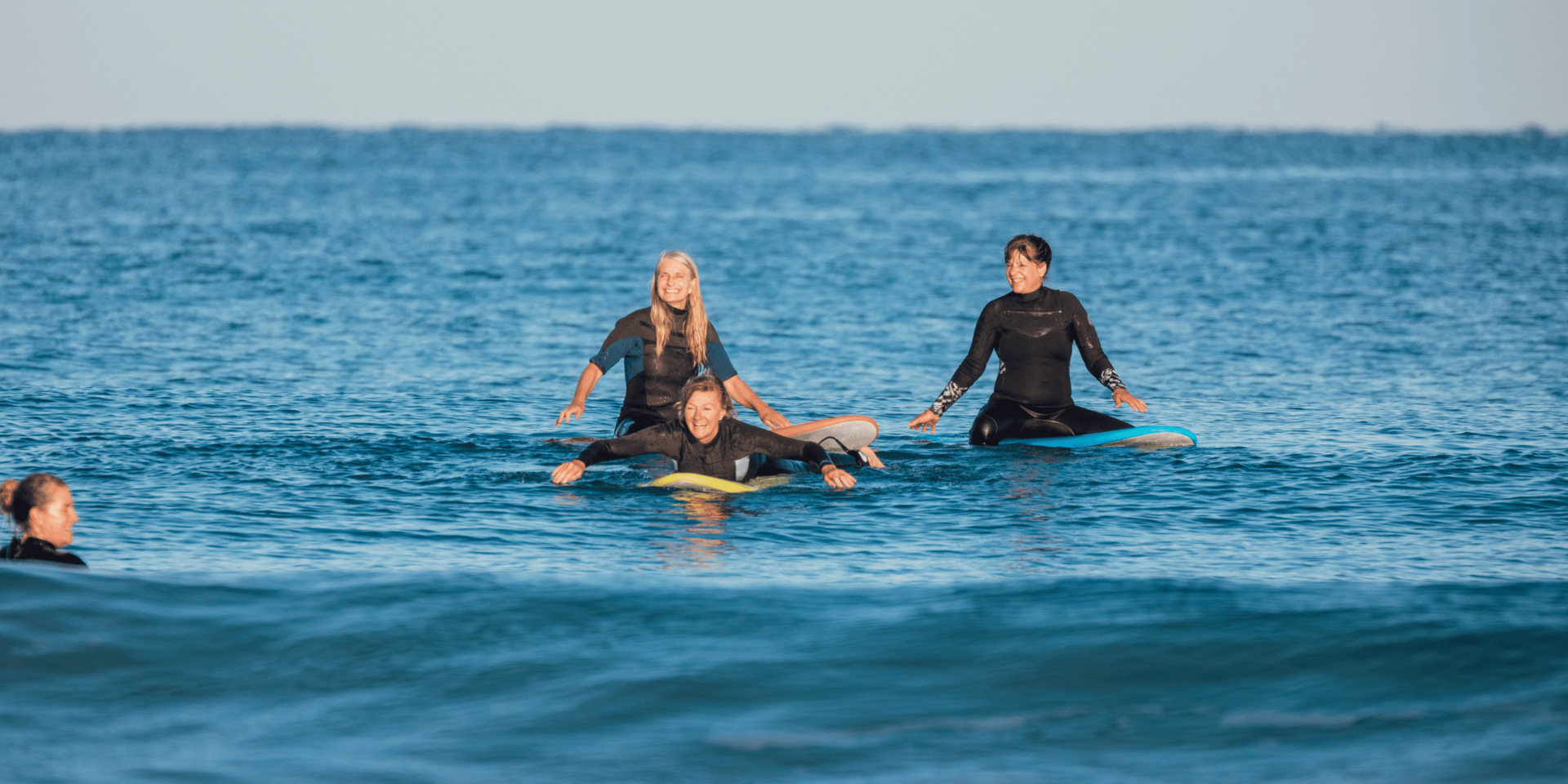
Surfing the Silence: Trust, Timing, and the Unspoken Bond
In the ocean, words fade. Surfers rely on silence, not speech, to build trust and move together in rhythm. Within the lineup, body language and timing replace conversation, forming a bond that shapes every session.
Surf Lineups Depend on Nonverbal Trust
Trust in the lineup develops without formal rules. Surfers learn to read each other through small gestures, shared awareness, and consistent behavior. Each wave becomes a test of reliability and mutual understanding.
A surfer waits just outside the peak, watching another paddle for a clean left. They don’t compete—they hold position, knowing it’s not their turn. This quiet decision communicates respect. The next time the set rolls in, the roles reverse. In silence, trust builds wave by wave.
Timing in the Water Reflects Shared Discipline
In surfing, timing is everything. Paddling too soon disrupts the flow. Moving too late risks collision. Surfers observe the ocean and each other, syncing their actions to maintain balance in the lineup. This timing becomes a shared language.
At a crowded break, a long lull ends with a clean set. The lineup tightens. Without a signal, several surfers shift slightly. One paddles early, backed off by another who recognizes the takeoff zone. Each movement is precise, shaped by mutual understanding and practiced discipline.
Eye Contact Signals Intention Without Words
In the absence of verbal cues, surfers rely on eye contact to communicate. A glance confirms who’s going. A nod settles potential overlap. These micro-interactions happen quickly but hold weight in maintaining order.
As a new set forms, two surfers move toward the same wave. Their eyes meet. One eases off, the other accelerates. No frustration, no confusion—just a clear exchange. This split-second moment prevents conflict and affirms the social code of the surf.
Silence Builds Respect Among Surfers
Speaking in the lineup isn’t necessary to earn respect. In many breaks, silence communicates experience and awareness more effectively than talk. Those who observe, wait, and move with care gain recognition from the group.
During a session with shifting conditions, a surfer takes only a few waves—but each one is chosen with precision. They don’t force their way into the lineup or overstep rotation. Their quiet focus earns respect not through volume, but through presence.
The Unspoken Bond Is Formed by Shared Risks
Surfing involves shared risk. Every person in the lineup faces changing tides, shifting winds, and unpredictable breaks. This common challenge forges a quiet connection. Even strangers form bonds through the physical experience of navigating the same waves.
A wipeout near the inside leaves a surfer shaken. Another, unknown to them, retrieves their board and hands it back without a word. They nod, then paddle back out. The bond isn’t formed in speech—it’s born in action, in understanding the vulnerability they both just experienced.
Movement and Position Communicate Belonging
In the lineup, how a surfer moves signals their level of experience and awareness. Positioning, timing, and reaction to others show whether someone understands the group dynamic. Belonging isn’t claimed—it’s earned through participation.
A newcomer paddles out and waits near the edge, observing before acting. They move in response to others, not ahead of them. Over time, they’re noticed, then included. The shift is gradual, and no one announces it. Silence confirms that the bond is forming.
The Rhythm of Surf Fosters Collective Focus
Surfing demands attention. When everyone in the lineup watches the horizon, reads the swell, and waits together, a collective rhythm forms. This focus creates a mental space where trust becomes natural and noise falls away.
At a reef break, a long lull sets in. The lineup stays still. Boards shift gently. Eyes fix on the water. No one speaks. Then the first bump rises. Instinctively, the lineup stirs as one. In that moment, the silence binds them, not just to each other, but to the sea itself.
Mutual Trust Lowers Conflict in Crowded Breaks
In busy surf spots, silence plays a key role in reducing conflict. Rather than argue or compete verbally, surfers use space and behavior to maintain peace. Trust, once established, prevents escalation even when waves are scarce.
A surfer gets cut off during a set. Instead of shouting, they hold position and maintain eye contact on the paddle back out. The other recognizes the mistake and stays wide next round. Without tension, balance is restored. Silence absorbs the friction and resets the rhythm.
Shared Sessions Strengthen Invisible Bonds
Returning to the same break with familiar faces builds connection, even without names. Surfers grow to recognize paddling styles, stances, and energy. These repeated sessions strengthen an invisible bond grounded in shared practice.
Over several weeks, a surfer notices the same small group arriving early, sitting quietly, and respecting the wave rotation. They join without fanfare. Soon, their rhythm matches the group’s. Conversations remain rare, but the bond becomes reliable—and lasting.
Surfing doesn’t require constant conversation. In the water, silence speaks louder than noise. Trust, timing, and awareness form the core of a surf session, guiding every decision without the need for words.
The unspoken bond that grows between surfers isn’t accidental—it’s built through presence, action, and mutual respect. In that silence, something real takes shape. A connection, forged in motion and shared risk, that says more than any sentence ever could.
